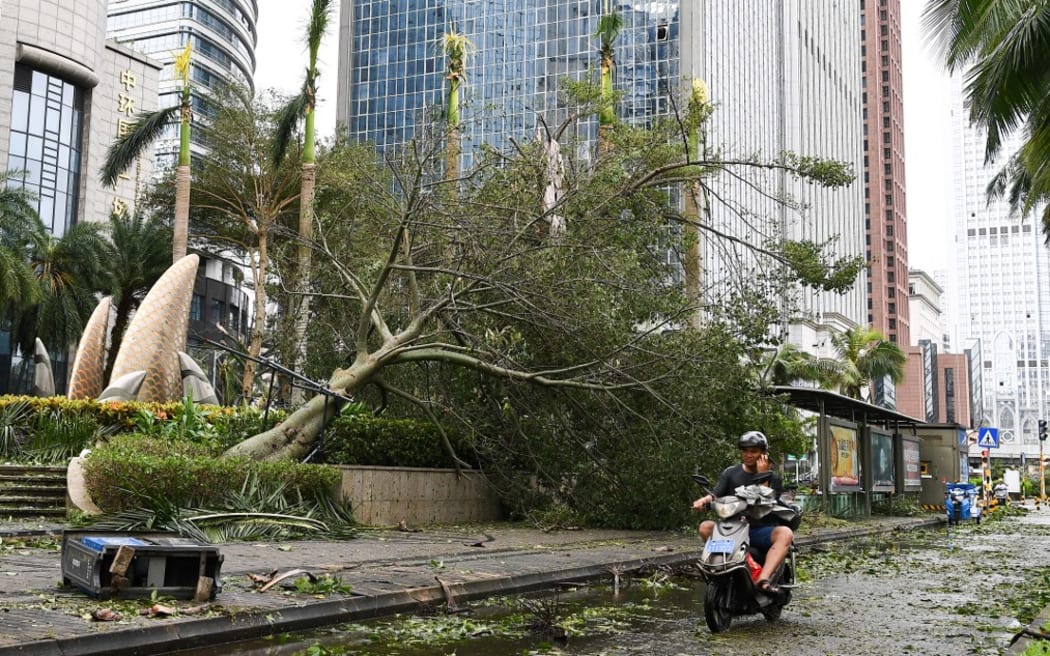Super Typhoon Yagi, one of the strongest storms of 2024, has made landfall in northern Vietnam, following a path of destruction through China’s Hainan Island.
Yagi, now the world’s second-most powerful tropical cyclone this year, struck northern Vietnam around 1300 local time (0600 GMT) with winds up to 160 kph (99 mph). The storm's intensity has diminished from its peak of 234 kph (145 mph) observed in Hainan a day earlier.
In Vietnam, the coastal city of Haiphong, home to 2 million people and a hub for both multinational and local industries, is facing significant impacts. Reports indicate that strong winds have shattered windows, broken tree branches, and caused power outages. The city’s streets are mostly empty as residents heed warnings to stay indoors.
Hainan Island, which has over 10 million residents, experienced severe damage from Yagi before it moved on. The typhoon caused extensive flooding, downed trees, and left more than 800,000 homes without power. The storm has been linked to at least two deaths and numerous injuries on the island.
In preparation for Yagi's arrival, Vietnamese authorities have evacuated nearly 50,000 people from coastal areas and deployed 450,000 military personnel. Major disruptions include the temporary closure of four airports, including Hanoi’s Noi Bai, and the cancellation of over 300 flights. Schools across 12 northern provinces, including Hanoi, are closed as a precaution.
The increasing frequency and intensity of typhoons like Yagi are linked to climate change, with rising ocean temperatures contributing to their strength. Last week, Typhoon Shanshan struck southwestern Japan, marking one of the strongest storms in recent decades.
As Yagi continues to move over the Gulf of Tonkin, emergency services across the affected regions remain on high alert, working to mitigate the storm’s impact and assist those in need.
Yagi, now the world’s second-most powerful tropical cyclone this year, struck northern Vietnam around 1300 local time (0600 GMT) with winds up to 160 kph (99 mph). The storm's intensity has diminished from its peak of 234 kph (145 mph) observed in Hainan a day earlier.
In Vietnam, the coastal city of Haiphong, home to 2 million people and a hub for both multinational and local industries, is facing significant impacts. Reports indicate that strong winds have shattered windows, broken tree branches, and caused power outages. The city’s streets are mostly empty as residents heed warnings to stay indoors.
Hainan Island, which has over 10 million residents, experienced severe damage from Yagi before it moved on. The typhoon caused extensive flooding, downed trees, and left more than 800,000 homes without power. The storm has been linked to at least two deaths and numerous injuries on the island.
In preparation for Yagi's arrival, Vietnamese authorities have evacuated nearly 50,000 people from coastal areas and deployed 450,000 military personnel. Major disruptions include the temporary closure of four airports, including Hanoi’s Noi Bai, and the cancellation of over 300 flights. Schools across 12 northern provinces, including Hanoi, are closed as a precaution.
The increasing frequency and intensity of typhoons like Yagi are linked to climate change, with rising ocean temperatures contributing to their strength. Last week, Typhoon Shanshan struck southwestern Japan, marking one of the strongest storms in recent decades.
As Yagi continues to move over the Gulf of Tonkin, emergency services across the affected regions remain on high alert, working to mitigate the storm’s impact and assist those in need.


















